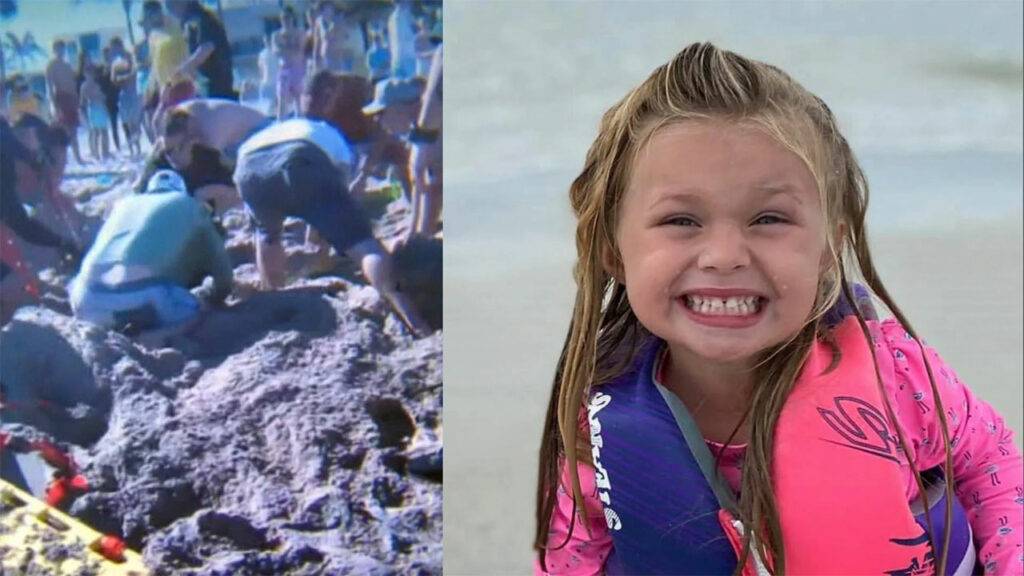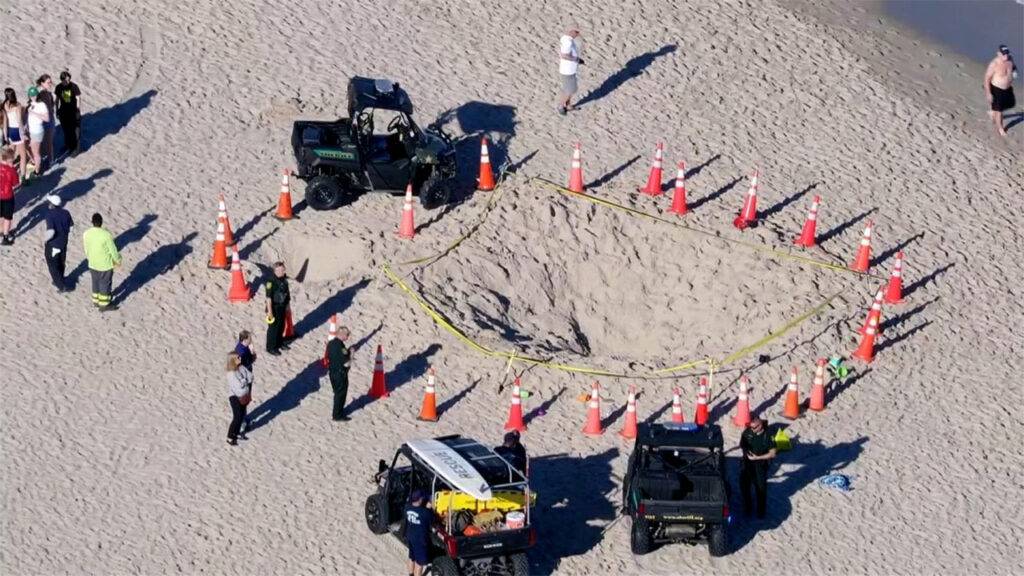In a heartbreaking incident, a 7-year-old Indiana girl, Sloan Mattingly, lost her life on a Lauderdale-by-the-Sea beach in Florida. The cause of this devastating event? The collapse of a seemingly innocent sand hole.

Florida Sand Hole Death
The incident occurred while Sloan and her 9-year-old brother, Maddox, were engrossed in the innocent activity of digging. Maddox, buried up to his chest, survived, but Sloan was tragically fully covered by the collapsing 5-to-6-foot-deep hole. This incident sheds light on the underrecognized danger posed by sand holes, a peril that claims and injures several children annually across the country.
A sand hole, as the name suggests, is a hole dug in the sand, often by beachgoers, especially children, seeking to explore the depths. However, the allure of digging deeper can turn perilous.
Dr. Stephen Leatherman from Florida International University’s Department of Earth and Environment warns that deep holes can be a “death trap.” According to Leatherman, digging holes more than two feet deep poses a significant risk as the sand starts drying out immediately, making it prone to collapse.
“When people dig holes more than two feet deep and get in them, at least where their body’s below the sand level, the sand starts drying out immediately,” Leatherman cautions. “And dry sand can only hold a 33-degree angle, and people dig these holes almost vertically.”
Deadly Sand Hole Killed Girl on Florida Beach
Rescuing someone from a collapsed sandhole is an immensely challenging task. Bystanders in Lauderdale-by-the-Sea attempted to save Sloan using their hands and plastic pails, but the hole kept collapsing.
The absence of lifeguards at the beach added to the difficulty, with professionals arriving minutes after the collapse. Efforts by rescue crews, using shovels and boards, proved futile, as Sloan had no pulse when reached.
“People think it’s like snow avalanches or something,” Leatherman explains. “It’s quite different. An avalanche, people have been saved. Snow is a kind of light. An avalanche occurs, and the snow can be a little blocky and there are gonna be air pockets. There are no air pockets in the sand.”
Alarming Statistics: Sand Hole Deaths are More Common Than We Think
“We don’t hear much about it, but nationally, there have been a large number of people who have died in sand hole collapses,” Leatherman reveals. Reports and a 2007 medical study indicate that three to five children die annually in the United States due to sandhole collapses, while others suffer serious injuries requiring CPR for survival.

A Plea for Caution
Sand is undoubtedly a source of joy and playfulness, but caution is paramount. Leatherman emphasizes, “If you dig holes — no deeper than two feet, and cover them up when you leave. Keep it shallow and you don’t have a problem of collapse.”
Lifeguard Patrick Bafford underscores the importance of parents monitoring the size of holes children dig, urging them to keep it shallow and avoid potential hazards. Shawn DeRosa, who trains lifeguards, emphasizes the need for parents to consider the risks of allowing children to dig deep or wide holes, as the consequences can be tragically swift.
As we revel in the pleasures of the beach, let’s heed these warnings, ensuring that innocent play does not turn into a perilous adventure, preventing future tragedies like the one that befell young Sloan Mattingly.


